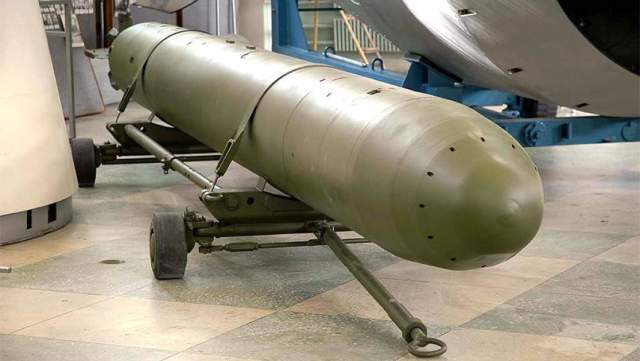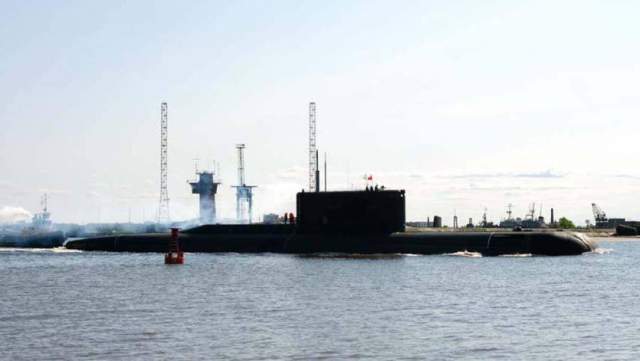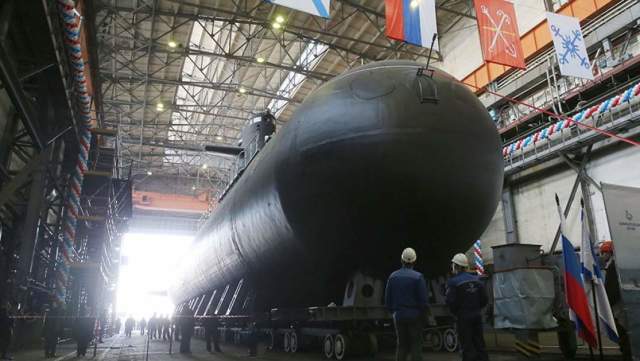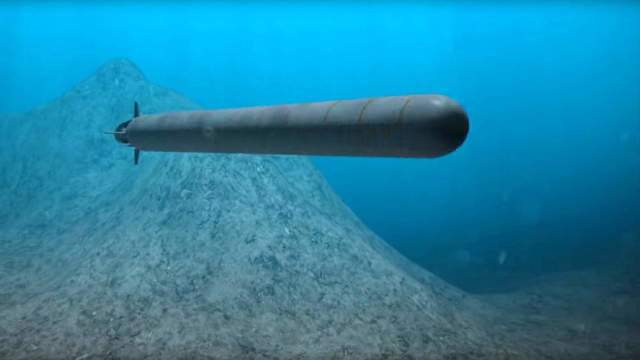The adoption of this device will expand the capabilities of the Russian nuclear deterrent forcesA series of publications about a new Russian threat — the Poseidon underwater unmanned vehicle equipped with a thermonuclear warhead, appeared in the Western media in the fall of 2022.
It was reported that its launch can be made by the Belgorod submarine that has been tested. According to these articles, the launch of such a torpedo cannot be tracked, and the destruction it can cause is terrible. The publications had grounds for themselves: the project to create a fourth component of the nuclear deterrent forces — in addition to missiles, aerial bombs and torpedoes — has been developed in our country since the late 1980s. What is true and what is fiction in the stories about Poseidon's capabilities — Izvestia understood.
The Legend of Poseidon
Carriers of nuclear charges today can be different means of delivery. Most often these are cruise or ballistic missiles. Sometimes — bombs. Artillery shells or torpedoes can also carry a nuclear charge. When developing the first thermonuclear charge in the 1950s, it became clear that it would be a fairly massive structure weighing several tons. Such indicators sharply narrowed the choice of options for delivering the charge to the target. One of them was a bomb that could be carried by heavy bombers such as Tu-4, Tu-95 and M-4. In addition, under the leadership of Sergei Korolev, the creation of the R-7 rocket capable of carrying a multi-ton charge at a range of several thousand kilometers began.
And at the same time there was a project of a large-caliber T-15 naval torpedo. The diameter of the case is 1.55 m, the length is more than 23 m, the weight is 40 tons. It was supposed to arm the first Soviet nuclear submarine of Project 627. The potential targets of such a torpedo were enemy naval bases. According to the idea, a thermonuclear explosion in the water area of the base was supposed to destroy the infrastructure and the ships based there. The disadvantages of the development were the relatively short range of such a torpedo — only 24 km, and very limited ammunition: the nuclear-powered project 627 could carry only one T-15 torpedo. As a result, the Navy rejected the project.

T-5 nuclear torpedo
Image Source: Photo: commons.wikimedia.org
Only by the end of the twentieth century, the development of nuclear power, computer control systems and materials science allowed us to create such a project and begin its implementation.
Work on what is now called Poseidon began in the late 1980s by the Makeev State Rocket Center and the Rubin Design Bureau of Underwater Shipbuilding. In the 1990s, compact nuclear power plants were created, which made it possible to create underwater vehicles with an unlimited range. In the mid-2000s, the creation of the first experimental prototypes began, as well as testing of individual parts of the product.
The first successful launch of an experimental prototype from the submarine B-90 "Sarov" was carried out in October 2008. The main task that was solved at this stage was to provide an exit from the horizontal launcher under water of an object large enough in size and weight so that the submarine was kept at a given depth. Without working out such a start, further work on the creation of a new underwater complex was impossible. Tests of prototype products were conducted with the involvement of the rescue vessel "Zvezdochka" project 20180 with a special barge — it lifted spent prototypes from the seabed after launches.

Diesel-electric submarine B-90 "Sarov" goes to sea
Image Source: Photo: kuleshovoleg.livejournal.com
At the end of December 2014, information appeared in the media about tests on the non-nuclear submarine "Sarov" of robotic means for submarines of a new generation. In 2015, a report by the NTV television company showed a frame with a presentation of the project of the Status-6 apparatus of the following purpose — "the defeat of important objects of the enemy's economy near the coast and causing guaranteed unacceptable damage to the country's territory by creating zones of extensive radioactive contamination unsuitable for military, economic and other activities in these zones".
Next, in 2016, the American media, referring to intelligence data, wrote that an underwater unmanned vehicle Kanyon with a nuclear installation was launched from the Sarov submarine. Kanyon, aka "Status-6", is the old name of the Poseidon project, which was assigned to it a little later, after President Vladimir Putin first announced the creation of an uninhabited underwater vehicle in Russia for the destruction of marine and coastal targets on March 1, 2018.
In addition to the nuclear triad
Officially, Poseidon is a robotic underwater boat—based vehicle and a marine robotic complex. Its development is carried out under the general management of the Central Design Bureau of MT Rubin (St. Petersburg). The Poseidon complex is just being tested — a research nuclear submarine Belgorod has been created for its development, which is equipped with six huge 2P39 launchers.
The combat carriers of the 2M39 Poseidon vehicles will be the boats of the new project 09851. The project's lead boat, Khabarovsk, has been under construction in Severodvinsk at Sevmash since 2014. In 2023, it is expected to be launched for further completion and testing. There is a possibility that by 2025 the tests of the Poseidon underwater vehicles will be completed autonomously and on the Belgorod experimental boat. And their tests will begin with a regular combat carrier.

Photo: TASS/Peter Kovalev
Image source: iz.ru
In fact, we are present at the creation of a new, fourth, component of the nuclear deterrent force. As part of the fleet, a new command will probably be created, on whose shoulders the operation, deployment, planning and use of a new type of nuclear weapons will fall. It is already known that the infrastructure for servicing Poseidons is being created in the Northern Fleet and in Kamchatka.
There are suggestions that regular carrier boats will be built in a small series and will begin combat duty in the Arctic and Pacific Oceans in the second half of the 2020s. The range of the Poseidons is unlimited, and therefore they will be able to hit a coastal target in the Atlantic, Indian, Pacific Oceans. In addition, Poseidons can also be used on squadrons of ships — there are no obstacles to equip this combat system with guidance means for moving naval targets.
Of course, Poseidons can have peaceful uses. Such unique autonomous underwater vehicles operating at depths of up to 1 thousand meters can solve problems of a search and research nature. And for sure, the civilian use of Poseidons will be worked out along with their military use. But now their main task is a guaranteed retaliatory strike from under the water in case of a nuclear missile attack.
Dmitry Kornev

